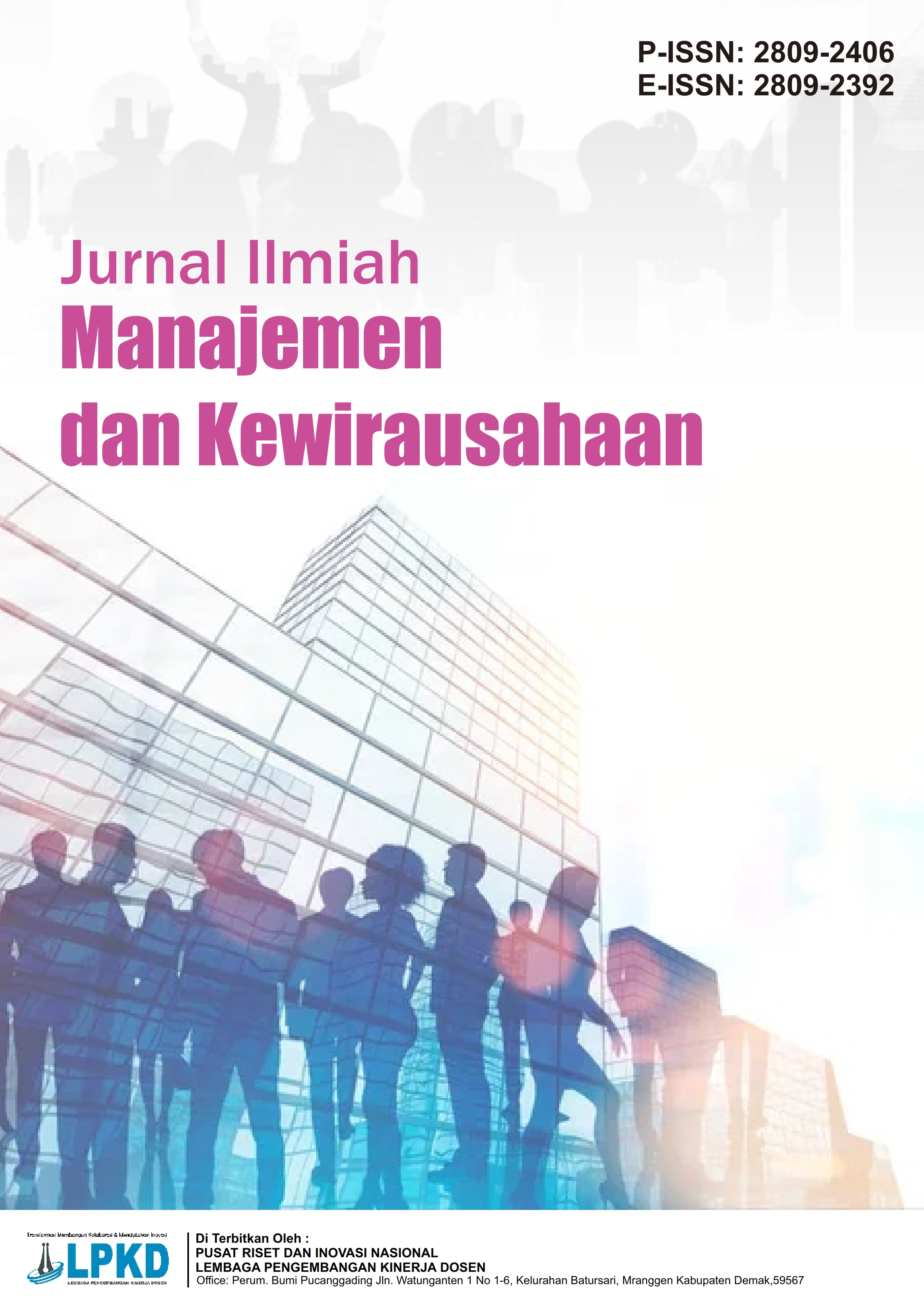Pengaruh Kemanfaatan dan Kemudahan Penggunaan terhadap Kinerja Pegawai yang Dimediasi Kepuasan Pelanggan di Direktorat Lalu Lintas dan Angkutan Laut
DOI:
https://doi.org/10.55606/jimak.v4i1.4955Kata Kunci:
Usefulness, Ease of Use, Customer Satisfaction, Employee Performance, Technology Acceptance Model (TAM), Digital Public ServiceAbstrak
Digital transformation in public services demands the implementation of technology that is not only functional but also capable of meeting user expectations. This study aims to analyze the influence of perceived usefulness and ease of use of the Marine Traffic and Transportation Management Information System application on employee performance at the Directorate of Marine Traffic and Transportation, as well as to examine the mediating role of customer satisfaction in this relationship. This research employs a quantitative approach using a survey method through questionnaires distributed to 152 application users from marine transportation companies. The data were analyzed using Structural Equation Modeling with a Partial Least Squares approach. The analysis results show that perceived usefulness and ease of use have a positive and significant effect on customer satisfaction. Furthermore, both variables, along with customer satisfaction, were also found to have a significant direct effect on employee performance. More importantly, customer satisfaction significantly mediates the relationship between perceived usefulness and ease of use and employee performance. These findings underscore that improving user experience quality by creating applications that are useful and easy to operate is a crucial strategy for building customer satisfaction, which ultimately has implications for enhancing public service employees’ performance perceptions.
Referensi
Alzahrani, A. (2023). An Analysis of the Technology Acceptance Model (TAM) in Understanding Faculty’s Behavioral Intention to Use Internet of Things (IoT). International Journal of Educational Research and Innovation, 19, 153–169.
Borman, W. C., & Motowidlo, S. J. (2014). Organizational Citizenship Behavior and Contextual Performance. https://doi.org/10.4324/9781315799254
Davis, F. D. (1989). Perceived Usefulness, Perceived Ease of Use, and User Acceptance of Information Technology. MIS Quarterly, 13(3), 319–340.
Febriyani, D. A. (2018). PENGARUH KEMUDAHAN PENGGUNAAN DAN KEMANFAATAN TERHADAP MINAT BELI ONLINE PADA MAHASISWA UST YOGYAKARTA PENGGUNA ZALORA. Jurnal Ekobis Dewantara, 1(11), 10–19.
Ghozali, I. (2016). SEM (Structur Equation Modeling) Metode Alternatif dengan menggunakan Partial Least Squares (PLS). BP Universitas Diponegoro.
Jogiyanto, H. (2019). Analisis Dan Desain Sistem Informasi, Pendekatan Terstruktur Teori Dan Praktek Aplikasi Bisnis. Andi Offset.
Kelerey, B., Djatmika, E. T., & Siswanto, E. (2020). The Effect of Technology Acceptance Model and Organizational Culture on Employee Performance with Attitude as Mediator Variable. South East Asia Journal of Contemporary Business, Economics and Law, 21(5), 41–48.
Koopman. (2011). The Relationship Between Job Performance and Job Satisfaction.
Kotler, P., & Keller, K. L. (2016). Marketing Management (15th ed.). Pearson.
Muhajirin, A., & Ali, H. (2023). The Influence of Leadership, Technology Acceptance and Training on Performance. Dinasti International Journal of Digital Business Management, 4(4), 41–48.
Pohan. (2016). Jaminan Mutu Layanan Kesehatan. EGC.
Pratama, M. R. A. (2023). Study of the Use of Accounting Software with Technology Acceptance Model (TAM) Approach on MSMEs in the City of Mataram. The 4th International Conference on Economics, Business and Information Technology, 502–510.
Sugiyono. (2017). Metode Penelitian Kuantitatif, Kualitatif, dan R&D. Alfabeta.
Tjiptono, F., & Diana, A. (2015). Pemasaran Jasa. Andi Offset.
Venkatesh, V., & Davis, F. D. (2000). A Theoretical Extension of the Technology Acceptance Model: Four Longitudinal Field Studies. Management Science, 46(2), 186–204.
Warsono, H., Yuwono, T., & Putranti, I. R. (2022). Analyzing Technology Acceptance Model for Collaborative Governance in Public Administration: Empirical Evidence of Digital Governance and Perceived Ease of Use. International Journal of Data and Network Science, 7, 41–48.
Wida, P. A. M. W., Yasa, N. N. K., & Sukaatmadja, I. P. G. (2016). APLIKASI MODEL TAM (TECHNOLOGY ACCEPTANCE MODEL) PADA PERILAKU PENGGUNA INSTAGRAM. JUIMA - Jurnal Ilmu Manajemen, 6(2), 1–20.
Yusuf, A., Dewi, N. A., Ula, N. S., & Luthfi, A. (2021). PENGARUH PERSEPSI MANFAAT DAN KEMUDAHAN PENGUNAAN TERHADAP KEPUASAN KONSUMEN OVO. Jurnal Manajemen, 11(1), 54–63.
Unduhan
Diterbitkan
Cara Mengutip
Terbitan
Bagian
Lisensi
Hak Cipta (c) 2025 Jurnal Ilmiah Manajemen dan Kewirausahaan

Artikel ini berlisensiCreative Commons Attribution-NonCommercial-ShareAlike 4.0 International License.







